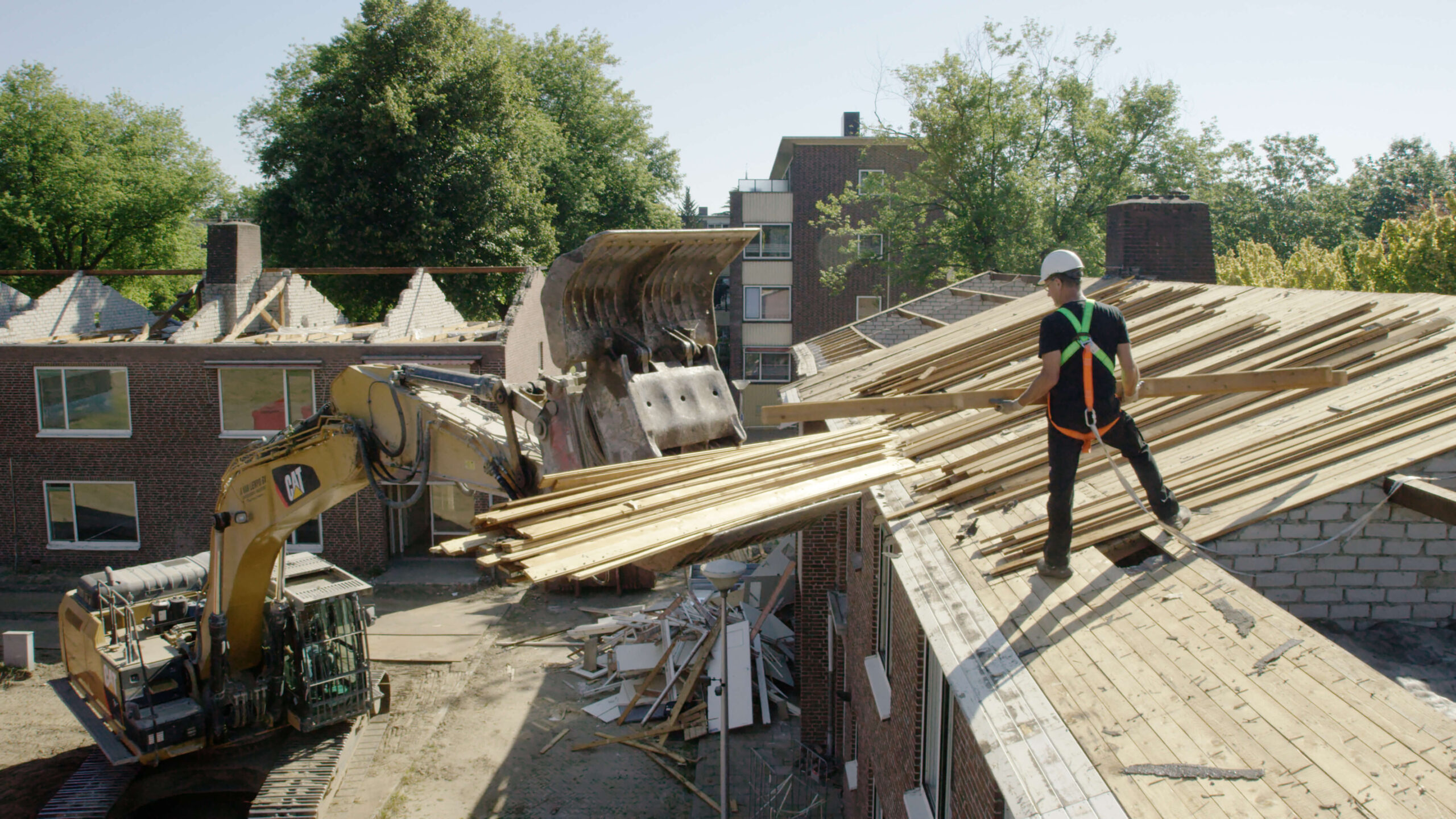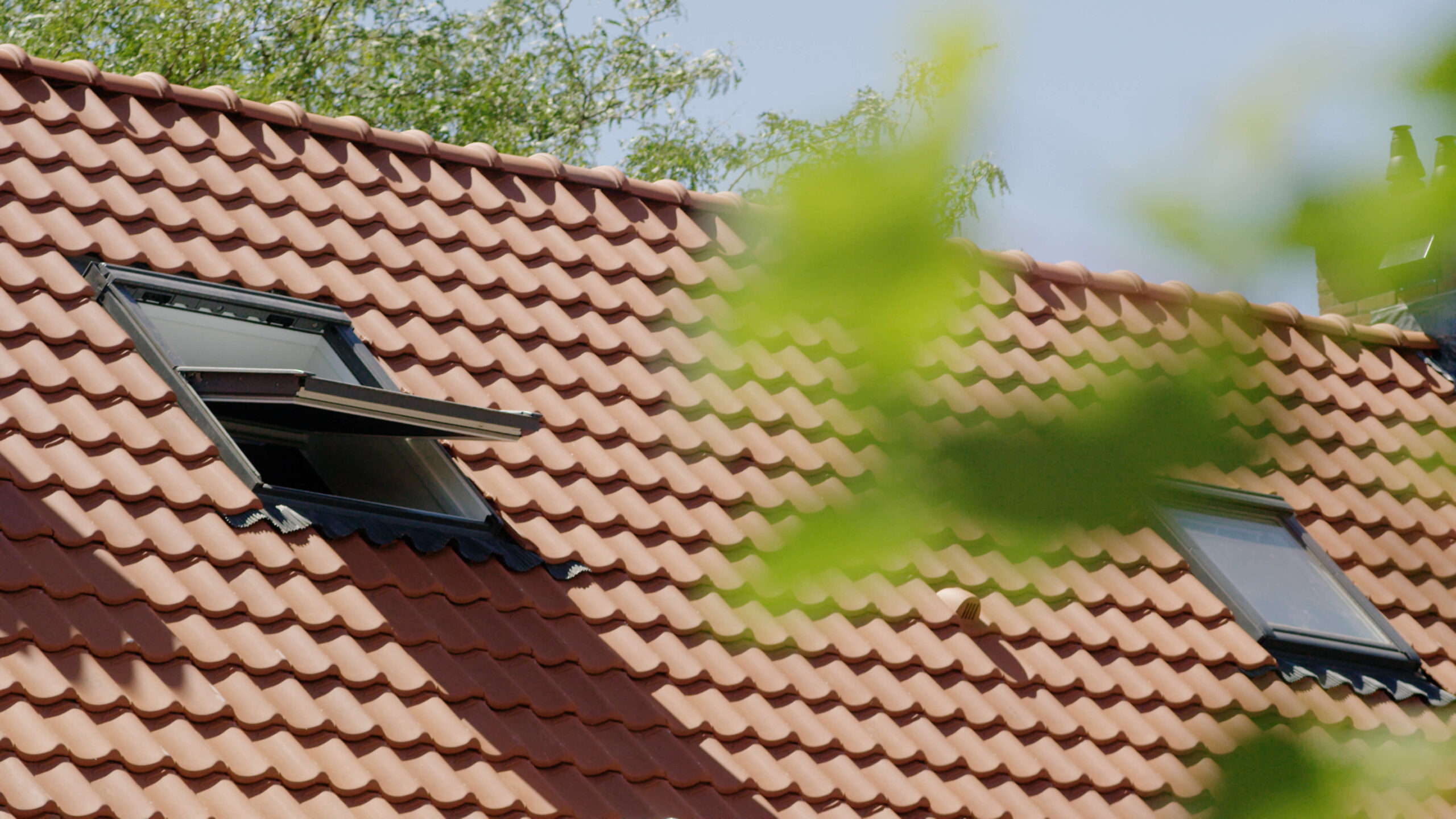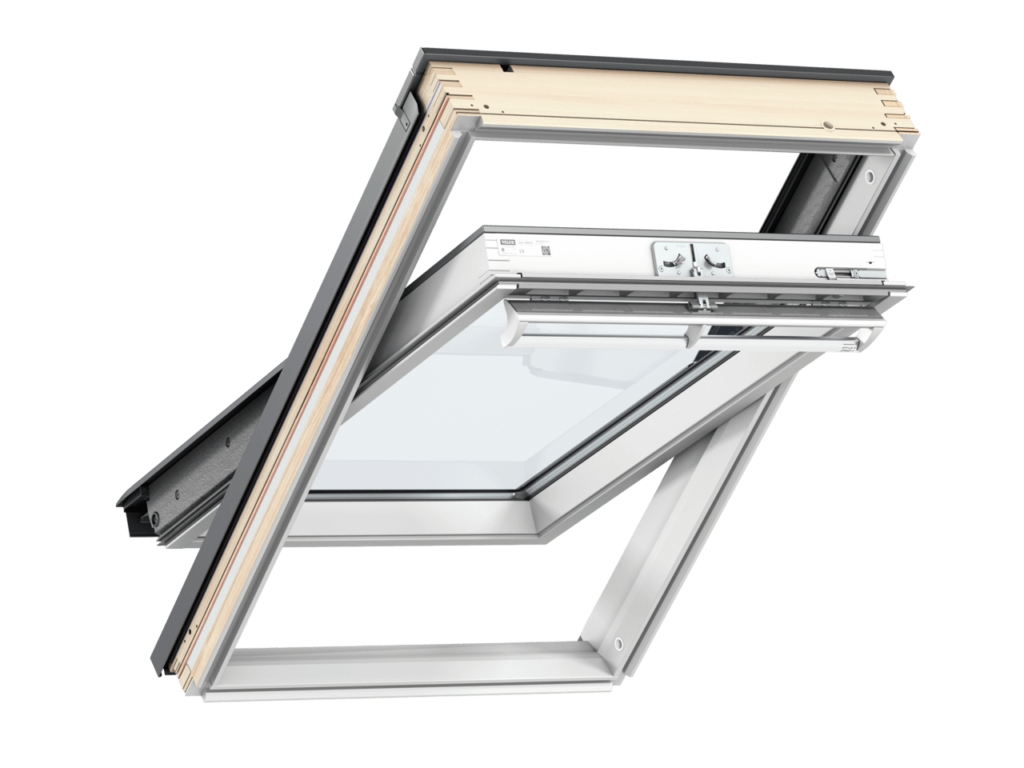The VELUX roof windows made of reclaimed wood are Forest Stewardship Council (FSC) certified as 100% Recycled. The wood was mined by A. van Liempd Demolition Companies from the built environment, after which it was sawn and prepared for the production process of a VELUX roof windows. The biggest advantage of reusing wood is that the lifespan is extended and storage of CO2 in the wood by 30 to 40 years and can save 30% of new raw materials in production. All this fits in with the circular and sustainable purchasing policy.
Extends the duration and storage of CO2 in the wood by 30 to 40 years and saves 30% new raw material use.

Made of
The contribution to the CO2 footprint for all parts that make up a window can be divided as follows: 4% wood, 22% aluminum, 11% other metals, 27% glass. The remaining part of the CO2 footprint is created by transport 8%, production 13%, packaging 2% etc. Targets have been formulated to have these emissions at least halved by 2030.
Applied
As roof window

Environmental impact
The CO2 footprint of these products is calculated using industry-average CO2 conversion factors that are aligned with the scope 3 objective. The CO2 footprint of a roof window is 105kg CO2 where 6% of the total falls within scope 1 and 2, 94% comes from the value chain. The share of CO2 from wood, glass, aluminum, metal and other raw materials have been inventoried and concrete reduction targets have been formulated on this.
Good to know
The quality of the roof windows remains the same. The mined wood appears to have a good moisture percentage and is therefore perfectly suitable for reuse. There is no difference in the properties, quality or durability of this window, made of reclaimed wood compared to a standard window. The only difference is that with the mined wood we can save 30% new raw materials in production. Meanwhile, more housing corporations and national contractors have applied this product in renovation projects or circular housing concepts.
Growth opportunities
This circular way of retrieving and reprocessing used materials saves material and reduces CO2 emissions. Certain wood is attractive to reuse, as the CO2 storage in the wood of the roof windows can be extended by 30 to 40 years. Wood and other biobased materials therefore have very good properties for sustainable (re)construction. Further CO2 emissions and raw material reduction can be achieved by increasing the recycled content of the other materials in a roof window such as aluminum, glass and steel. But also the production and logistics processes and the CO2 emissions of the suppliers contribute to this.
